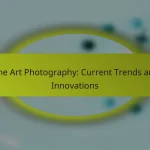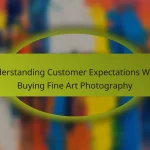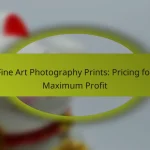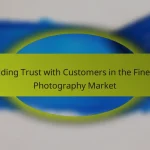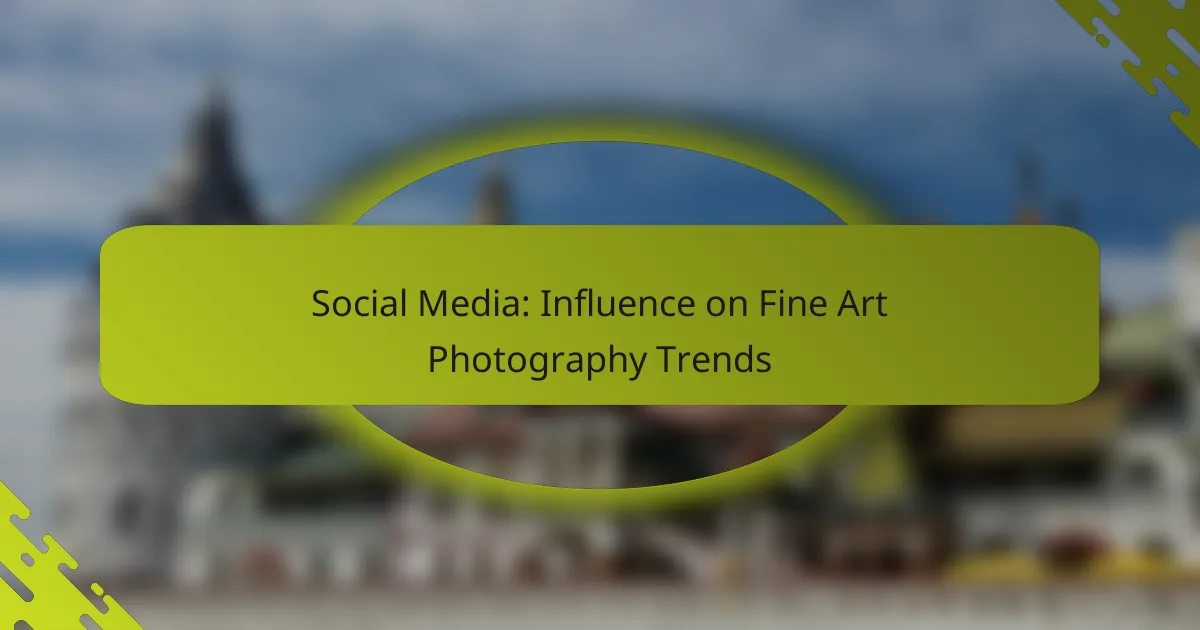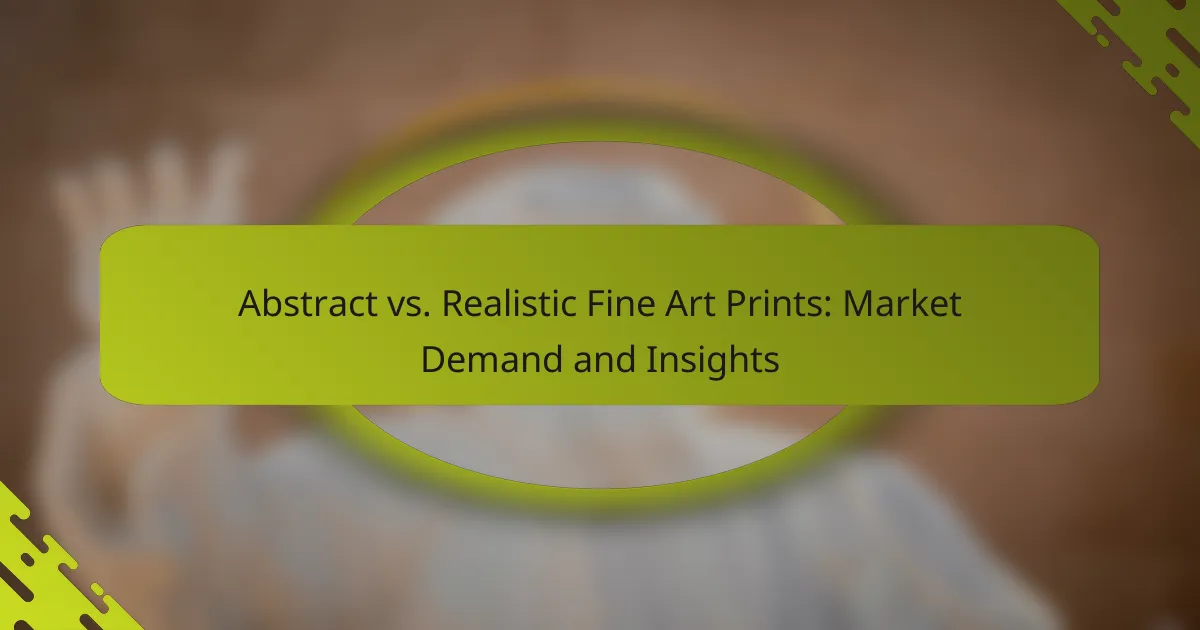Social media plays a pivotal role in shaping fine art photography trends by increasing artists’ visibility and enabling them to engage directly with audiences. Platforms like Instagram and Pinterest not only allow photographers to showcase their work but also influence popular styles and aesthetics through community feedback and engagement.
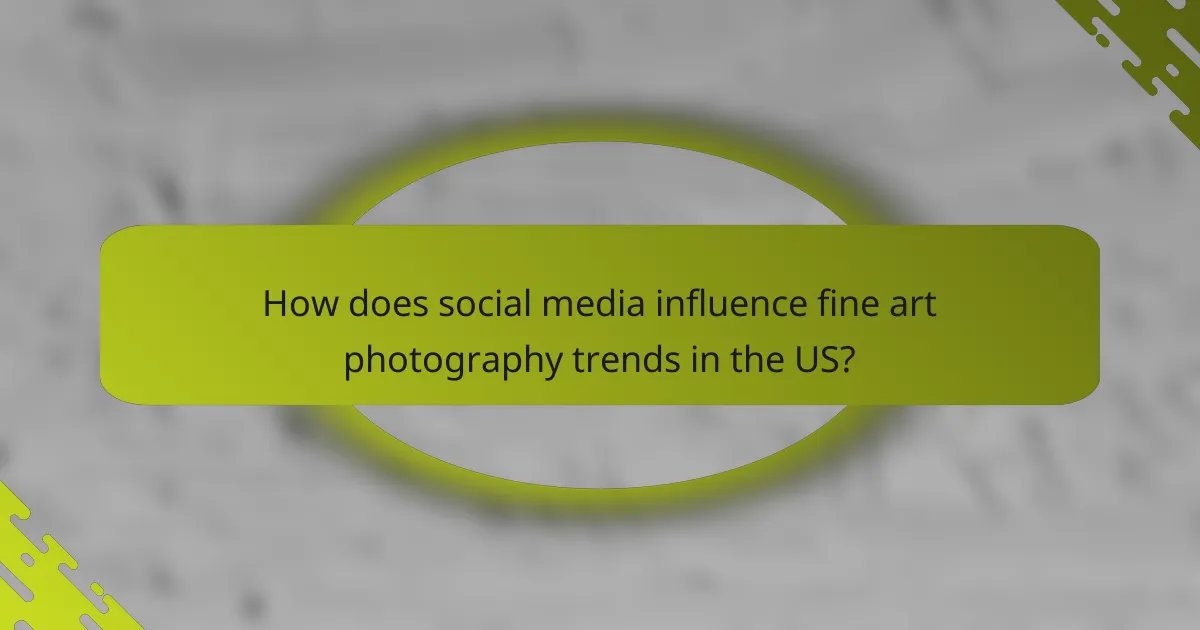
How does social media influence fine art photography trends in the US?
Social media significantly shapes fine art photography trends in the US by enhancing artists’ visibility, fostering new styles, and providing immediate audience feedback. Platforms like Instagram and Pinterest serve as vital tools for artists to showcase their work and connect with a broader audience.
Increased visibility for artists
Social media platforms enable fine art photographers to reach a global audience, which was previously limited to galleries and exhibitions. By sharing their work online, artists can gain exposure to potential buyers, critics, and collaborators without geographical constraints.
Utilizing hashtags and engaging with followers can further amplify an artist’s visibility. For instance, using popular tags related to fine art photography can attract viewers who may not have discovered the artist through traditional means.
Emergence of new styles
The influence of social media has led to the emergence of innovative styles in fine art photography. Artists often experiment with techniques that resonate with online audiences, resulting in unique blends of traditional and contemporary aesthetics.
Trends such as minimalism, surrealism, and vibrant color palettes frequently gain traction on platforms like Instagram, encouraging photographers to adapt their styles to meet evolving tastes. This adaptability can lead to the rapid evolution of artistic expression.
Real-time feedback from audiences
Social media allows artists to receive immediate feedback on their work, which can inform their creative process. Likes, comments, and shares provide insights into what resonates with viewers, enabling photographers to refine their approach based on audience preferences.
This real-time interaction can also foster a sense of community among artists and their followers. Engaging with feedback can lead to collaborative projects, further influencing trends in fine art photography as artists respond to the desires and interests of their audience.
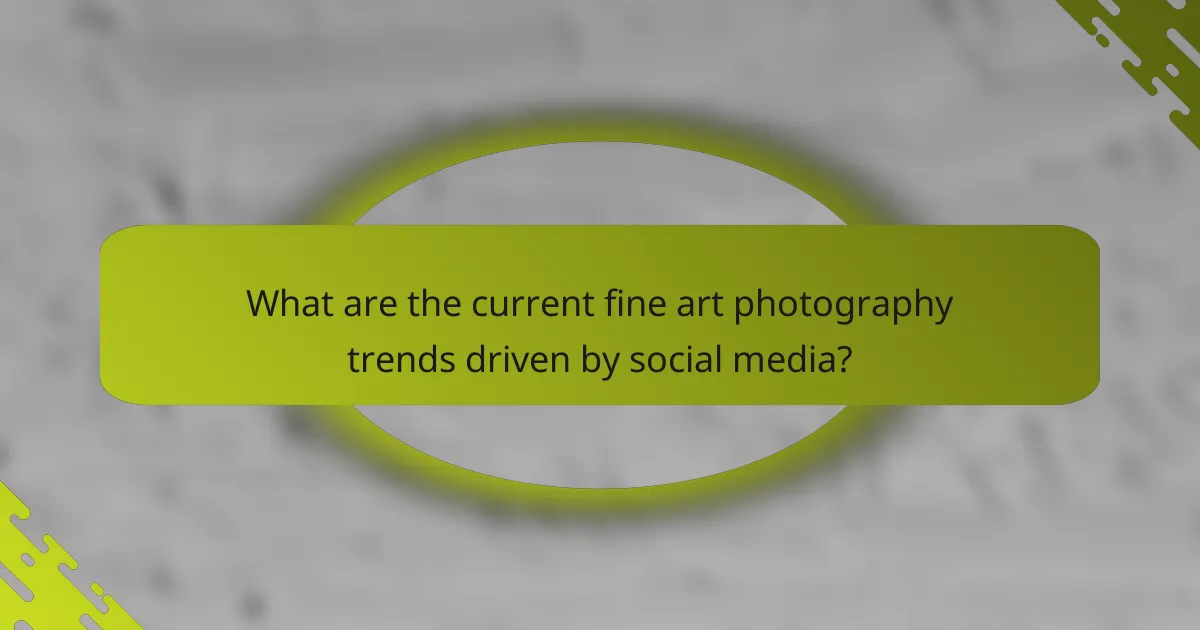
What are the current fine art photography trends driven by social media?
Social media significantly influences fine art photography trends by promoting visual styles that resonate with audiences. Current trends include minimalist aesthetics, bold color palettes, and conceptual storytelling, each reflecting the preferences and engagement patterns of online communities.
Minimalist aesthetics
Minimalist aesthetics focus on simplicity, using clean lines and negative space to create impactful images. This trend encourages photographers to strip away unnecessary elements, allowing the subject to stand out. For instance, a single object against a plain background can evoke strong emotions and provoke thought.
To effectively employ minimalist aesthetics, consider using a limited color palette and focusing on composition. Avoid clutter in your frame, and think about how each element contributes to the overall message. This approach can enhance viewer engagement on platforms like Instagram, where striking visuals often capture attention quickly.
Bold color palettes
Bold color palettes are gaining traction in fine art photography, with vibrant hues used to evoke emotions and create dynamic compositions. This trend often involves the use of contrasting colors to draw the viewer’s eye and create a sense of energy within the image. Photographers are experimenting with saturation and color grading to achieve striking results.
When utilizing bold colors, consider the psychological impact of your choices. For example, red can convey passion, while blue might evoke calmness. A well-thought-out color scheme can enhance the storytelling aspect of your work, making it more shareable on social media platforms.
Conceptual storytelling
Conceptual storytelling in fine art photography involves creating images that convey deeper narratives or themes. This trend encourages photographers to think critically about the message behind their work, often using symbolism and metaphor to engage viewers. The rise of platforms like Pinterest and Instagram has made visual storytelling more accessible and appealing.
To effectively implement conceptual storytelling, start by defining the message you want to communicate. Use props, settings, and subjects that align with your theme. Additionally, consider how your images will be perceived in a digital context, as captions and hashtags can enhance the narrative and encourage interaction.

Which social media platforms are most impactful for fine art photography?
Instagram, Pinterest, and Facebook are the most influential social media platforms for fine art photography. Each platform serves distinct purposes, from showcasing portfolios to fostering community engagement, making them essential tools for photographers looking to enhance their visibility and connect with audiences.
Instagram as a visual portfolio
Instagram is primarily a visual platform, making it ideal for fine art photographers to showcase their work. With its emphasis on high-quality images, photographers can create a cohesive portfolio that highlights their style and artistic vision.
To maximize impact, use relevant hashtags and engage with followers through comments and stories. Posting consistently and utilizing features like Instagram Reels can also help reach a broader audience.
Pinterest for inspiration and trends
Pinterest serves as a powerful tool for discovering inspiration and tracking trends in fine art photography. Users can create boards to save and categorize images, allowing photographers to see what resonates with audiences and adapt their work accordingly.
To leverage Pinterest effectively, focus on creating visually appealing pins with clear descriptions and links to your portfolio or website. Engaging with trending topics can also increase visibility and attract new followers.
Facebook for community engagement
Facebook is valuable for building a community around fine art photography. Photographers can join groups, share their work, and participate in discussions, fostering connections with both peers and potential clients.
To engage effectively, post regularly and interact with group members by providing feedback on their work. Hosting live sessions or Q&A events can also enhance community involvement and showcase your expertise.
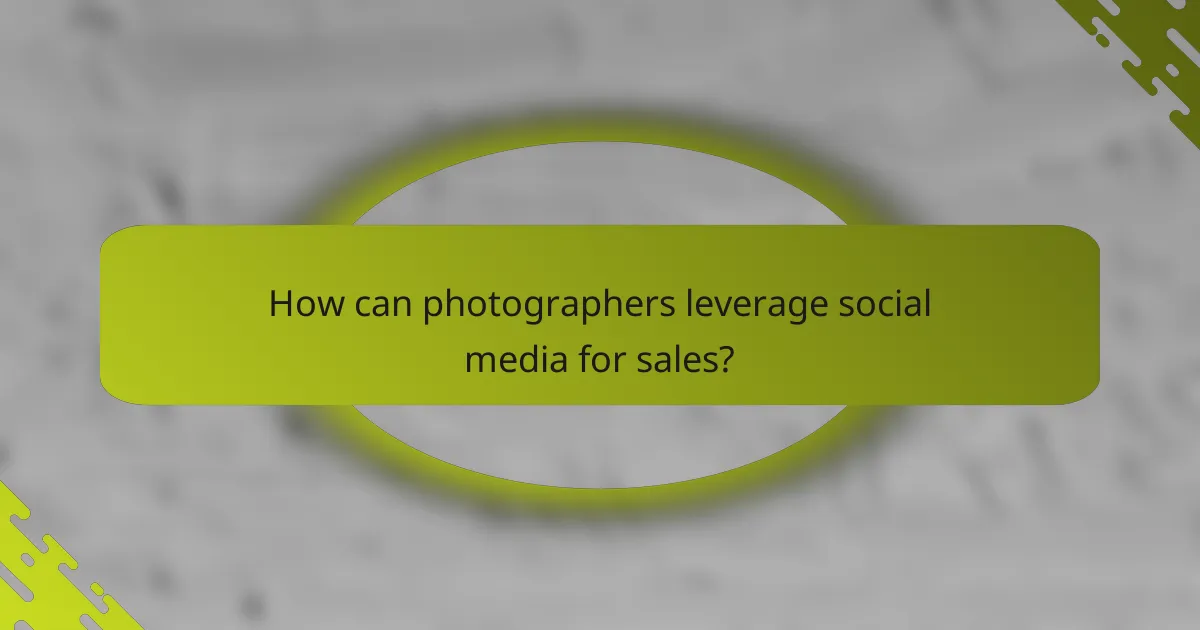
How can photographers leverage social media for sales?
Photographers can effectively leverage social media for sales by utilizing features designed for commerce, creating engaging content to attract followers, and collaborating with influencers to expand their reach. These strategies can significantly enhance visibility and drive sales of fine art photography.
Utilizing Instagram Shopping features
Instagram Shopping allows photographers to tag their artwork in posts, making it easy for potential buyers to view and purchase directly. By setting up a shop on Instagram, photographers can showcase their portfolio while integrating e-commerce seamlessly into their social media strategy.
To maximize this feature, ensure that your product catalog is well-organized and visually appealing. Regularly update your listings and use high-quality images to attract attention. Consider using Instagram Stories to highlight new arrivals or special promotions.
Creating engaging content for audience growth
Engaging content is crucial for growing an audience on social media. Photographers should focus on sharing behind-the-scenes shots, tutorials, or stories about their creative process to connect with followers. This not only builds a loyal community but also showcases the value of their work.
Utilize a mix of formats, such as videos, carousel posts, and live sessions to keep the content fresh and interactive. Aim for consistency in posting, ideally several times a week, to maintain visibility and encourage audience interaction.
Collaborating with influencers
Collaborating with influencers can significantly boost a photographer’s visibility and credibility. By partnering with influencers who align with their artistic vision, photographers can tap into new audiences and gain exposure to potential buyers.
When seeking collaborations, look for influencers who have a genuine interest in photography and a following that matches your target market. Consider offering them a commission on sales generated through their promotion, or providing free prints in exchange for exposure on their platforms.
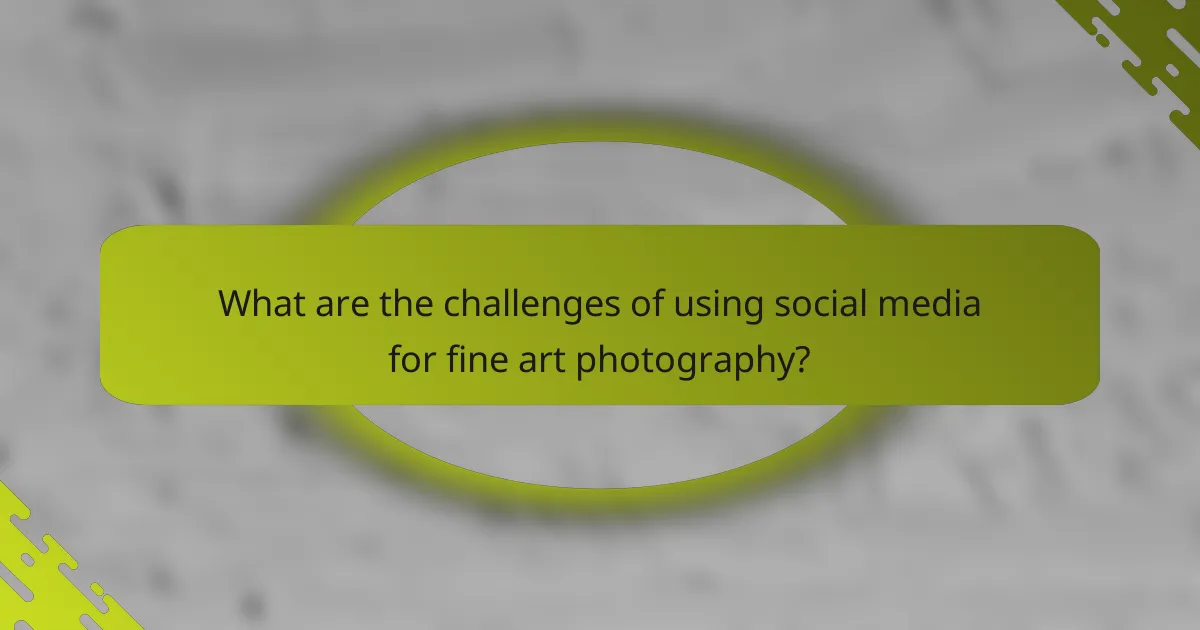
What are the challenges of using social media for fine art photography?
Using social media for fine art photography presents several challenges, including content oversaturation, the need to maintain authenticity, and the impact of algorithm changes on visibility. These factors can complicate how artists share their work and connect with audiences.
Oversaturation of content
The sheer volume of content on social media can make it difficult for fine art photographers to stand out. With millions of images uploaded daily, even high-quality work may struggle to gain attention. Artists need to develop unique styles or themes to differentiate themselves in this crowded space.
To combat oversaturation, photographers can focus on niche markets or specific genres within fine art photography. Engaging storytelling and consistent branding can also help create a memorable presence that attracts followers.
Maintaining authenticity
Authenticity is crucial for fine art photographers, as audiences often seek genuine connections with artists and their work. However, the pressure to conform to popular trends can lead to a compromise in artistic integrity. Photographers must balance their creative vision with the expectations of their audience.
To maintain authenticity, artists should stay true to their unique perspectives and styles. Regularly sharing behind-the-scenes content or personal stories can help build a deeper connection with followers while reinforcing their artistic identity.
Algorithm changes affecting visibility
Social media platforms frequently update their algorithms, which can significantly impact the visibility of fine art photography. Changes may prioritize certain types of content or engagement metrics, making it challenging for artists to reach their audience consistently. Understanding these algorithms is essential for effective social media strategy.
Photographers should stay informed about platform updates and adapt their strategies accordingly. Engaging with followers through comments, collaborations, and regular posting can help improve visibility despite algorithm fluctuations. Additionally, utilizing analytics tools can provide insights into what content resonates best with the audience.
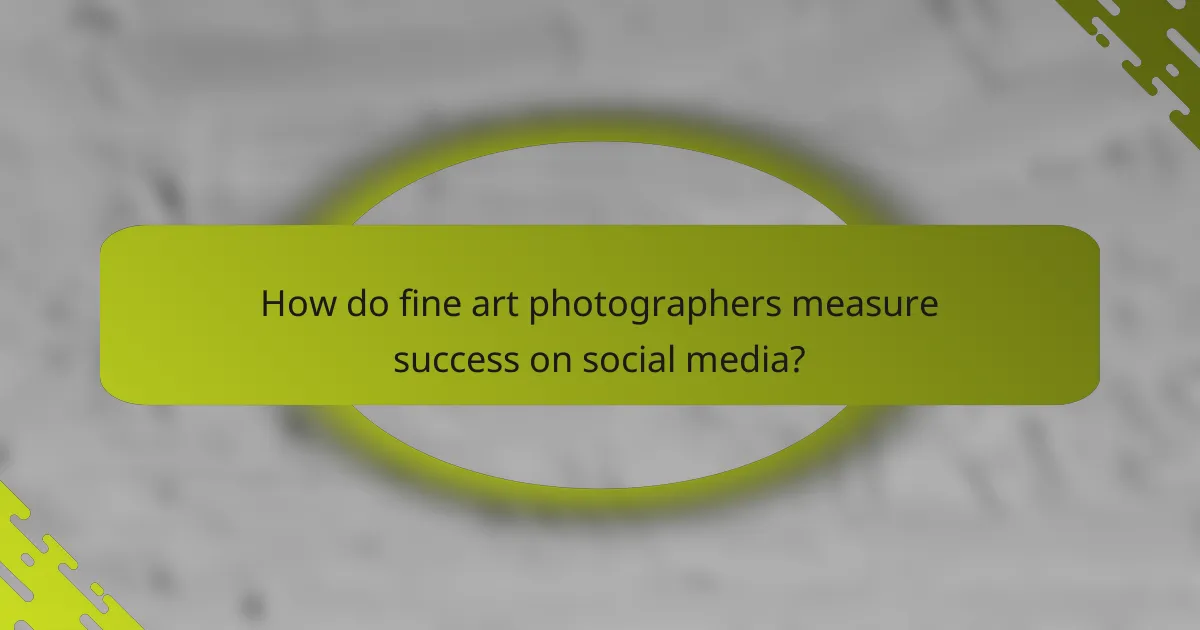
How do fine art photographers measure success on social media?
Fine art photographers measure success on social media primarily through engagement metrics and follower growth. These indicators help them assess their reach, audience interaction, and overall impact within the art community.
Engagement metrics analysis
Engagement metrics include likes, comments, shares, and saves, which indicate how well content resonates with the audience. High engagement rates often suggest that the artwork is appealing and encourages further interaction. Photographers should aim for engagement rates of around 1-3% as a benchmark for success.
To analyze these metrics effectively, photographers can use tools like Instagram Insights or third-party analytics platforms. Regularly reviewing these metrics allows photographers to adjust their content strategy, focusing on what garners the most interaction.
Follower growth tracking
Follower growth tracking involves monitoring the increase in followers over time, which reflects the expanding reach of a photographer’s work. A steady growth rate of 5-10% monthly is generally considered healthy in the fine art photography niche. Sudden spikes or drops can indicate shifts in content effectiveness or audience interest.
Photographers should keep track of follower growth alongside engagement metrics to gain a comprehensive view of their social media performance. Setting specific goals, such as increasing followers by a certain percentage each quarter, can provide motivation and direction for content creation and marketing efforts.

